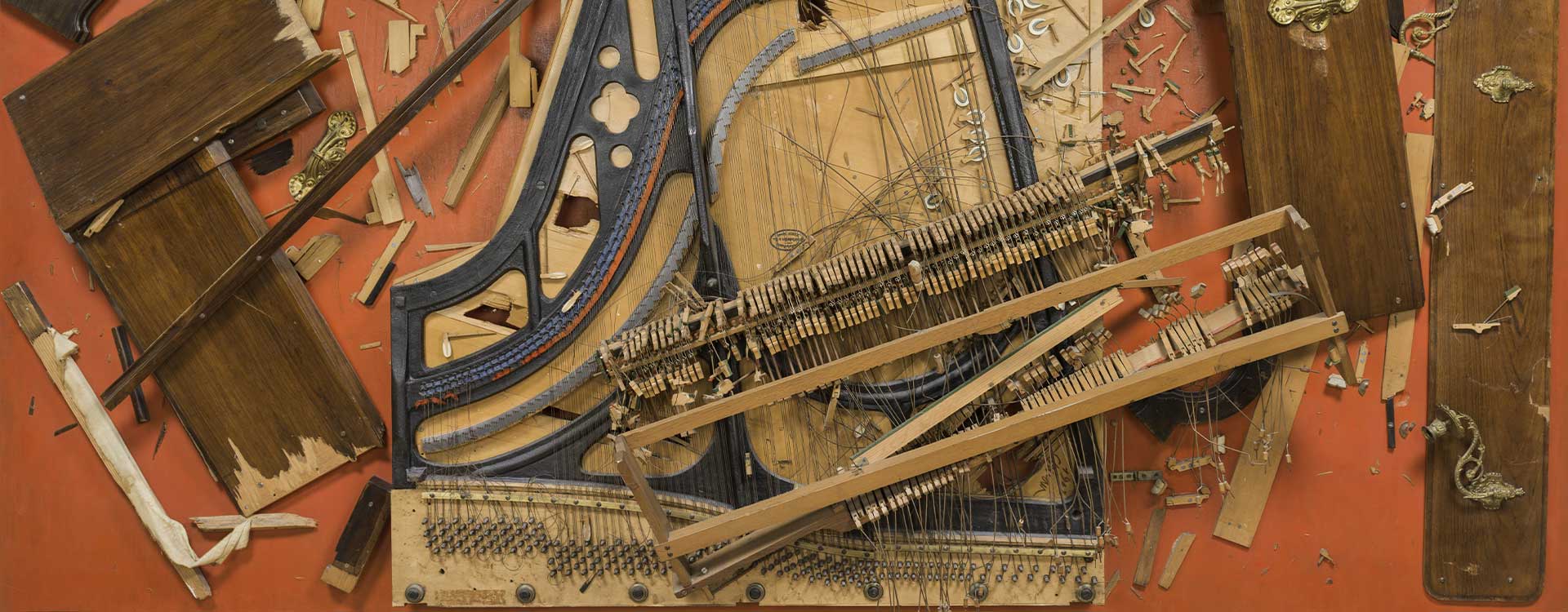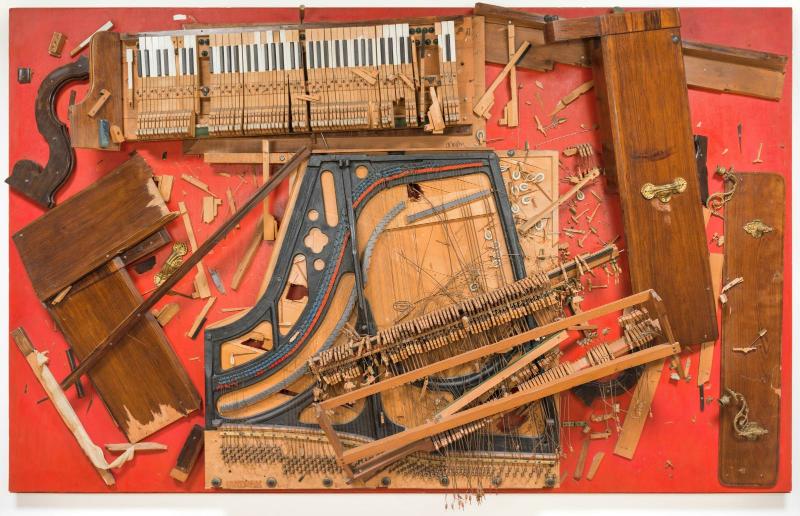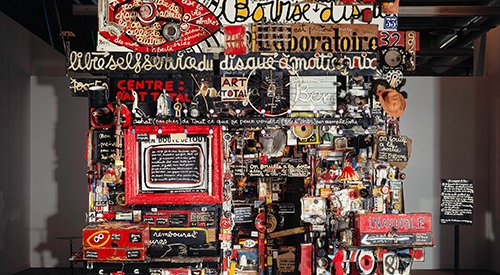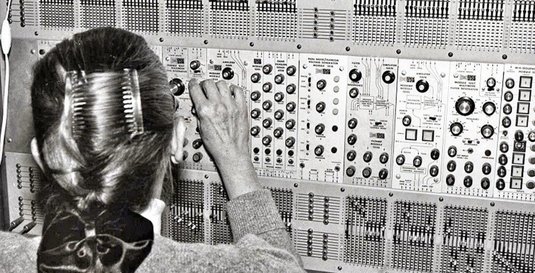
Focus on ... "Chopin’s Waterloo" by Arman
With the Colères series, begun in 1961, Arman (born Armand Fernandez) alternates the destruction of objects with a practice he had been developing since 1959: the aggregation of identical objects en masse in his renowned Accumulations. Born from a performative act of aggression in front of an audience, Chopin’s Waterloo preserves the ‘destruction–disarticulation’ of an upright piano. The scattered fragments of the instrument were subsequently reassembled on a panel, in the manner of a Cubist collage.
The ‘Colères’ are almost as precise as a judo throw. I calculate where I’m going to break something; it’s not really anger; it’s a more or less premeditated act of destruction.
Arman
Two paradoxical tendencies coexist in Arman’s work: on the one hand, a desire to preserve—evident in his Accumulations; on the other, an impulse to destroy—expressed through the Colères, the first of which took place in public in 1961 in Paris. In NBC Rage, Arman destroyed a double bass in front of American NBC television cameras on a vacant lot across from the Paris studio he shared with Jean Tinguely, at Impasse Ronsin. During the first Nouveau Réalisme festival in July 1961, he turned his attention to bourgeois cultural icons, smashing reproductions of Henri II-style furniture. In August 1962, during his exhibition “Musical Rage” at the Saqqarah gallery in Gstaad, Switzerland, Arman staged a performance in which he demolished a piano with a sledgehammer and affixed the resulting fragments onto a panel he had prepared in advance. In this way, the traces of his gesture were immediately preserved in the form of an assemblage–collage, which the artist explicitly aligned with the Cubist tradition.
Through aggression towards musical instruments—frequent targets in the Colères—Arman attacks a powerful symbol of harmony and culture. Beyond the spectacular aspect, the artist seeks through destruction a grandiose and epic dimension, not without a touch of humour—as underscored by the ironic title Chopin’s Waterloo. These actions are significantly part of a broader context, which sees the emergence of happenings, particularly in the United States and amongst the European Nouveaux Réalistes. ◼
Text from the catalogue Collection art contemporain - La collection du Centre Pompidou, Musée national d'art moderne, éditions Centre Pompidou, 2007
Related articles
In the calendar
Arman, Chopin's Waterloo (1962)
© Adagp, Paris
Centre Pompidou/Dist. RMN-GP





